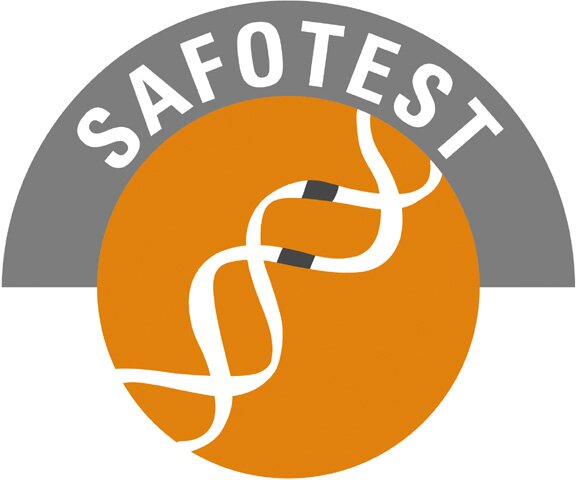
New methods for the safety testing of transgenitic food

|
About SAFOTEST
New methods for the safety testing of transgenitic food |
|
A Review of EC-supported Research on Safety of GMOs Practical Information
Scientific content
Objectives The overall objective of this project is to develop and validate the scientific methodology which is necessary for assessing the safety of foods from genetically modified plants in accordance with the EU Regulation 258/97 of 27 January 1997 concerning novel foods and novel food ingredients. The project is designed to meet the urgent need for a sensitive and specific testing strategy for GM foods in a scientifically valid and economically feasible manner. Scientific background In 1997 the EU Scientific Committee on Food (SCF) issued a set of recommendations for the safety assessment of novel foods, including GM foods. SCF suggested a decision tree approach, which for the toxicological part may include a demand for separate animal studies to provide the missing information. However, the SCF does not give specific advice on how to do these studies, but states that the design should be determined on a case-by-case basis. As a consequence, in Europe, no precise harmonisation of methodologies to assure safety of transgenic food products as yet exists, as it is difficult to use traditional animal feeding studies for toxicological assessments. Sensitive and specific validated nutritional-toxicological testing procedures in vivo and in vitro are urgently required. Approach used and methodology The project will examine a safety testing procedure for GM plant food and is subdivided into 7 different tasks as follows. Task I: Three strains of GM rice with inserted genes encoding three potentially insecticidal proteins: the lectins GNA (no mammalian toxicity known, but interacts with the gut) and PHA-E (high mammalian toxicity) and Bt toxin (no mammalian toxicity), respectively, are constructed and characterised. In addition, recombinant proteins are expressed and purified for later usage as spiking materials for the in vivo studies and test material for the in vitro studies. Task II: The three strains of transgenic rice are raised in sufficient quantities for the in vivo testing, and their genetic identity and stability are assured. Task III: The critical nutrients, the critical toxicants and other critical chemical changes in the transgenic rice strains are identified and measured. Task IV: An OECD 28-days toxicity and rat feeding study is performed to ensure the optimal diet composition and to measure suspected lectin or Bt sensitive parameters for application in task VI. Task V: Measurement of the effects of lectins/Bt toxin in a number of in vitro systems in order to adjust the sensitivity and specificity of parameters to be investigated in the animal study with the transgenic rice in task VI, and supplementary mechanistic and dose response studies in vitro to supplement the in vivo studies for the purpose of the final risk assessment. Task VI: The 90-day OECD toxicity study in rats with the three transgenic strains of rice with and without the relevant test protein added to it. In this study the measurements of the lectin/Bt sensitive parameters optimised in task IV and V will be incorporated. Task VII: The final workshop, where the results as well as the knowledge base aquired from task I to VI, are evaluated in order to assess the sensitivity, specificity and efficacy of the safety testing approach recommended by the EU Scientific Committee on Food. Outcome The results obtained from this project will be presented at workshops, published in international journals and discussed in international fora, thereby providing a platform from which methodologies and recommendations based on this project can be transformed into internationally accepted guideline tests for safety testing of complex GM foods. Conclusion If the outcome of the studies of this project is as expected, the data will be of great re-assurance to the European consumer concerned over the safety and wholesomeness of his/her food supply from genetically modified food plants. However, if the testing procedure investigated in this project does not allow assessment of the toxicity of the gene products inserted in the food from the GM plants, the whole strategy for the safety assessment of the novel foods from GM plants will need to be re-thought and revised. Major publications Knudsen I., Conventional foods versus genetically modified foods: Present knowledge and possible safety issues. In: "Gentechnik und Ernährung (Eds.: Erbersdobler, Hammes, Jany) Wissenschaftliche Verlagsgesellshaft mbH Stuttgart 1995, page 103-116. Engel, K.-E., Gerstner, G., Roß, A., Investigation of glycoalkaloids in potatoes as example for the principle of substantial equivalence. in: M. Schauzu, K.-W. Bögl (Hrsg.) "Die Novel Foods Verordnung der Europäischen Union - Verläßlichkeit der gesundheitlichen Bewertung.", BgVV-Heft, 1998, 197-209. Rao, K.V., Rathore, K.S., Hodges, T.K., Fu, X.D., Stoger, E., Sudhakar, D., Williams, S., Christou, P., Bown, D.P., Powell, K.S., Spence, J., Bharathi, M., Gatehouse, A.M.R., and Gatehouse, J.A., Expression of snowdrop lectin (GNA) in the phloem of transgenic rice plants confers resistance to rice brown planthopper, 1998, The Plant Journal 14, 469-477. Van Hal, N.L.W., Vorst, O., Kok, E.J., Van Houwelingen, A.M.M.L, Peijnenburg, A.A.C.M., van Tunen, A.J., and Keijer, J., The application of DNA microarrays in gene expression analysis. J Biotechnology 2000, 78, 271-280. Taylor MA, George LA, Ross HA, Davies HV., cDNA cloning and characterisation of an alpha-glucosidase gene from potato, The Plant Journal, 1998, 13, 419-425. Illustrations
|
|||||||||||||||||||||||||||||||||||||||||||||||||||||||||
|
About SAFOTEST - Results - Press Releases |
|||||||||||||||||||||||||||||||||||||||||||||||||||||||||